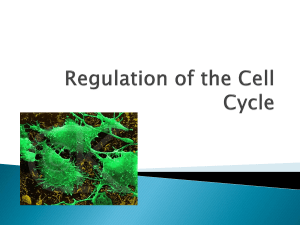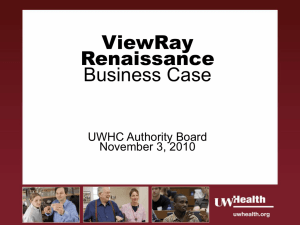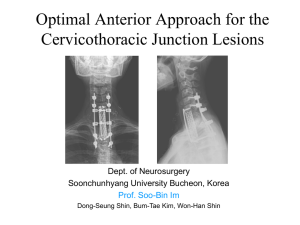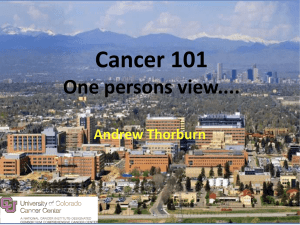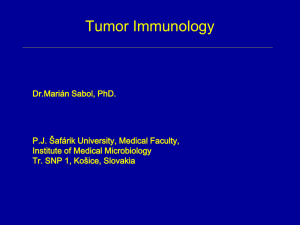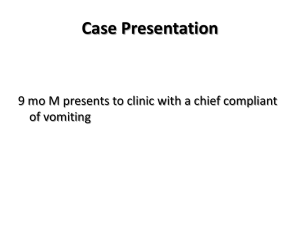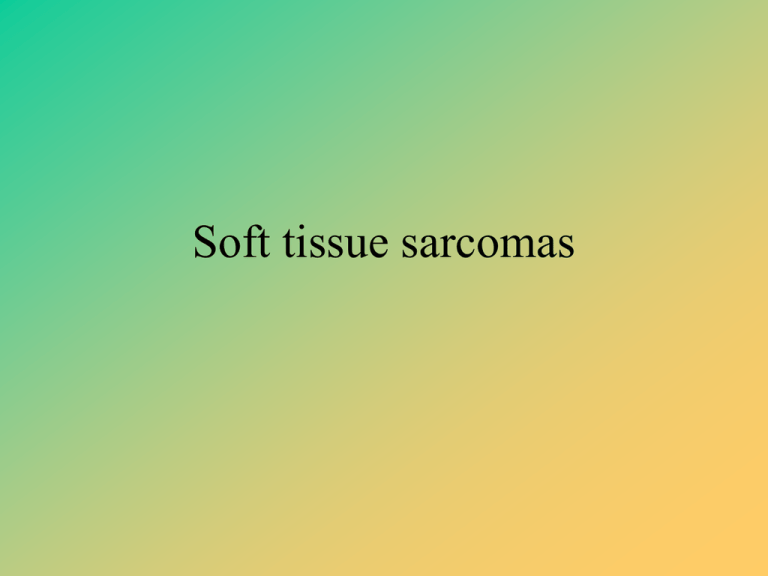
Soft tissue sarcomas
• Heterogeneous group of neoplasms which stem from
muscles, vessels, lymphatic tissue, connective tissue,
synovial tissue or primitive mesenchymal cells
• The most common – rhabdomyosarcoma (RMS)
approximately 50% of all sarcomas in children and young
adults
• Incidence:
-in childhood 7.5% of all neoplasms
-annually new diagnosis in 8/1 million children <16years
-ratio of boys: girls 1.4 : 1
Subtypes
•
•
•
•
•
•
•
•
•
Mesenchyma
Striated muscle
Smooth muscle
Fatty tissue
Connective tissue
Synovial tissue
Lymphatic vessels
Nerve sheath
Blood vessels
•
•
•
•
•
•
•
•
•
Myxoma, mesenchymoma
RMS
Leiomyosarcoma
Liposarcoma
Fibrosarcoma
Synovial sarcoma
Lymphoangiosarcoma
Neurofibrosarcoma
Angiosarcoma,
hemangiopericytoma
Rhabdomyosarcoma
Age of distribution:
Location:
•
•
•
•
•
•
•
•
•
•
•
•
•
<1 year
1–4
5–9
10-14
>15
-7%
-35%
-25%
-20%
-13%
Head and neck
Orbital
Genitourinary
Extremities
Trunk
Retroperitoneal
Perineal and anal
Others
-26%
- 9%
-22%
-18%
-7%
-7%
-2%
-9%
Histopathology
• Embryonal : 53-64% of all RMS in childhood
location: orbit, head and neck, abdomen, genitourinary tract
subtype: sarcoma botryoides(6%) – in genitourinary tract
• Alveolar: 21%
location: mainly extremities
• Pleomorphic : 1%
mainly in adulthood
• Undifferentiated: 8%
Clinical manifestation
• Symptoms depend on tumor location
• Head and neck -35%
- location : orbit and parameningeal – middle ear, mastoid,
nasal, paranasal area, pharynx, fossa pterygopalatina, fossa
infratemporalis, neck
-symptoms: orbit- proptosis
-middle ear: pain, chronic otitis media, polypoid mass
obstructing the ear canal
-nasopharyngeal tract:obstruction of airways, sinusitis,
pain, epistaxis, difficulty in swallowing, eventually
polypoid tumor visible in the pharynx or in nasal area
-neck:hoarseness, difficulty in swallowing, visible tumor
RMS
• Genitourinary tract: 22%
-location:urethra, vagina, uterus, prostate, bladder, testes,
paratesticular area, spermatic cord
-symptoms: problems of urination, hematuria, vaginal
bleeding, sarcoma botryoides
• Extremities (18%) and trunk (7%):
-location: trunk, chest, abdomen, paraspinal area
-symptoms: indolent mass, symptoms of spinal
compression, dyspnea
• Retroperitoneal area:7%,
-symptoms: large tumor, abdominal pain, ascites
Extermity RMS
RMS of the bladder
Diagnosis
•
•
•
•
•
Biopsy
Radiology diagnosis: usg, CT, MRI
Bone scan
Bone marrow aspiration and biopsy
Lumbar puncture
Staging
• I A- localized tumor,confined to site origin, completely resected
• I B - localized tumor infiltrating beyond site of origin, completely
resected
II A –localized tumor, gross total resection, but microscopic residual
disease
• II B –locally extensive tumor (spread to regional lymph nodes),
completely resected
• II C –extensive tumor (spread to lymph nodes, gross total resection,
but with microscopic residual disease)
• III A- localized or locally extensive tumor, gross residual disease after
biopsy only
• III B- localized or locally extensive tumor, gross residual disease after
major resection (50% debulking)
• IV any size of primary tumor with or without regional lymph node
involvement, with distant metastases, irrespective of surgical approach
to primary tumor
Metastatic spread
-metastases via lymphatic or/and hematogenous spread
-CNS, lung, lymph nodes, liver, bone, bone marrow
Treatment
Surgical procedure (total resection or biopsy)
Radiotherapy (II- IV)
Chemotherapy (CWS)
Prognosis
Depend on:
• stage,
• tumor size,
• extension after surgery,
• location (favorable: orbit or genitourinary tract),
• histology (unfavorable: pleomorphic)
• Age (more favorable in children < 7years old)
Survival:
EFS 20 – 80 % depending on stage
Bone tumors
• Osteosarcoma
• Ewing’s sarcoma
= 90% of primary bone tumors occuring in children and
adolescents
Osteosarcoma
• Primary malignant tumor of bone, originates from
mesenchymal stem cell capable of differentiating toward
bone
• The most common bone tumor in children and adolescents
• Rare in first decade of life
• Most frequent in adolescent during growth spurt
• Male : female 1.3 – 1.6 :1
Location
• Approximately 50% in knee region
• Skeletal regions affected by greatest growth rate, i.e. distal
femoral and proximal tibial metaphyses
• humerus – third most frequently involved bone
• Pelvis, i.e. ilium approximately 10%
Etiology/ genetics
• Relation between rapid growth and development of
osteosarcoma
• Ionizing radiation
• Alkylating agents and anthracyclines →secondary
osteosarcoma
• Association with Paget’s disease
• Common second malignancy after inherited retinoblastoma
–alteraltion in Rb common in sporadic osteosarcoma
• Common association with a germline TP53 mutation
(Li-Fraumeni syndrome)
Clinical presentation
• Pain originating from involved region for weeks – months
– even 1 –1.5 year!!! Delayed diagnosis !!!
• Loss of function
• 10-15% of patients metastases when staged
• Lung metastases predominate
Evaluation
Radiology:
plain radiographs in two planes – characteristic radiological features:
- tumor matrix may be mineralized resulting in variable dense opacities
of different sized and shapes
- tumor margins may be poorly defined.
Destructive growth pattern with lytic and sclerotic areas and normal
bone tissue commonly observed
- cortex exhibits frequently destructive growth, the tumor is rarely
limited to medullary space
-extension into soft tissue
-periosteal reaction often present, radiating striations called „sunburst
signs” or open traingles overlying the diaphyseal side of lesion –
Codman’s triangle or in the form of multiple layers – „onion skin”
• Magnetic resonance imaging (MRI) of primary site of at
least complete involved bone plus adjacent joints. MRI is
more appropriate than CT scan
• Open biopsy
• Metastases: chest X-ray, CT scan of thorax, skeletal
radionuclide scan
Treatment
• Combined therapy :
preoperative chemotherapy
+
surgery (goal is a wide resection, limb –saving surgery
with allograft or prosthesis )
+
postsurgical chemotherapy
Osteosarcoma is relatively radioresistant
• Prognosis:
5 -year overall survival –65% (without metastasis at
diagnosis– 70%, with metastasis -30%
Ewing sarcoma family of tumors
• Neuroectodermal histogenesis of tumors
• Genetics: 95% of patients present translocation t(11;22)
>translocation of the EWS gene on chromosome 22q12
with one of the genes of the FLI oncogene family =
fusion transcript EWS - FLI
• Histological subclassification:
- classic Ewing sarcoma (ES)
-extraskeletal or soft tissues ES
-Askin tumor (chest wall)
-peripheral primitive neuroectodermal tumor (PNET) of
bone or/and soft tissue
Epidemiology
Annual incidence 2.7/1million children < 15 years
Male : female 1.5 :1
80% of tumors in patient younger than 20 years of age
50% - in second decade of life
Mean age at diagnosis 15 years
More common in white than black population
Clinical presentation
• Pain followed by swelling of the overlying affected bone
• The duration from the onset of first symptoms to diagnosis
- many months.Symptoms are frequently explained away
as being a result of trauma or „growing pains”
• Systemic symptoms: fever (20%)
• Presence of nerve root pain or neuropathies from nerve
compression
• Anemia, leukocytosis, increased sedimentation rate
• Pathological fracture – in 10% of cases
Location
• Almost 50% of ES – in the femur or pelvis
• Mainly lower extremities involved, less frequently – upper
extremities
• Chest wall
• Less common in the spine, paravertebral region, head and
neck
Pathologic fracture
mass of Ewing sarcoma
Metastases
• Hematogenous route is most frequent pattern of spread:
lungs, bone, bone marrow
• Askin tumor may invade the adjacent pleural space with
subsequent pleural effusion
Metastases
•
•
•
•
Radionuclide scan of skeleton
X-rays or MRI scans of affected areas
Chest X-ray
Bone marrow aspiration
Evaluation
• Laboratory findings:
-complete blood count
-blood sedimentation, C- reactive protein
-tumor lysis parameters, electrolites, kidney and liver
parameters
-lactate dehydrogenase
• Radiology :
x-ray:periosteal reaction(onion-skin phenomenon)
MRI (tumor volume)
• Open biopsy
Treatment
• Neoadjuvant chemotherapy +
surgery
+
adjuvant chemotherapy
+
radiotherapy
Prognosis
• Depends on surgical resection, tumor localization,
tumor volume, presence of macroscopic metastases,
molecular/ biological aspects
• 5 year EFS approximately 70%
Retinoblastoma
Epidemiology
•
•
•
•
•
•
2% of all neoplasms in childhood
Annually 3/ 1 million children < 16 years old diagnosed,
1 in 15000 – 20000 births
Median age at diagnosis – 2 years
Boys : girls 1:1
Bilateral form 20-40% (more frequent in girls)
Etiology/ genetics/pathogenesis
• Sporadic form –60%
• Hereditary form 40%, two mutational event are required
for tumor occurence:
1. Mutation in germ cell
2. Mutation in target cell (retina). Autosomal , dominant
trait with high penetrance, i.e. nearly 50% of relatives
develop a retinoblastoma, mostly bilateral.
• Chromosomal alteration is located on chromosome 13q14
involving the RB1 retinoblastoma gene ( which is in the
chromosomal region linked to the development of
osteosarcoma – the most frequent secondary tumor)
Clinical manifestation
• Leukokoria – „cat’s eye” – in the pupil of the eye is the
first sign in majority of patients
• Strabismus
• Anisocoria
• Loss of vision
• Diagnosis is generally established on fundoscopy
Diagnosis
• Fundoscopy – a white tumor accompanied by
angiomatous dilatation of the vessels.
• Radiological examinations:
ultrasound
CT
magnetic resonance imaging (MRI)
Therapy
• Surgical management (enucleation)
The objective is to maintain vision without endangering
the life of the child. In the advanced stages enucleation is
necessary.
• Chemotherapy
• Radiotherapy
• Laser photocoagulation
• Cryotherapy
• Brachytherapy
Prognosis: survival 80-90% of all patients

